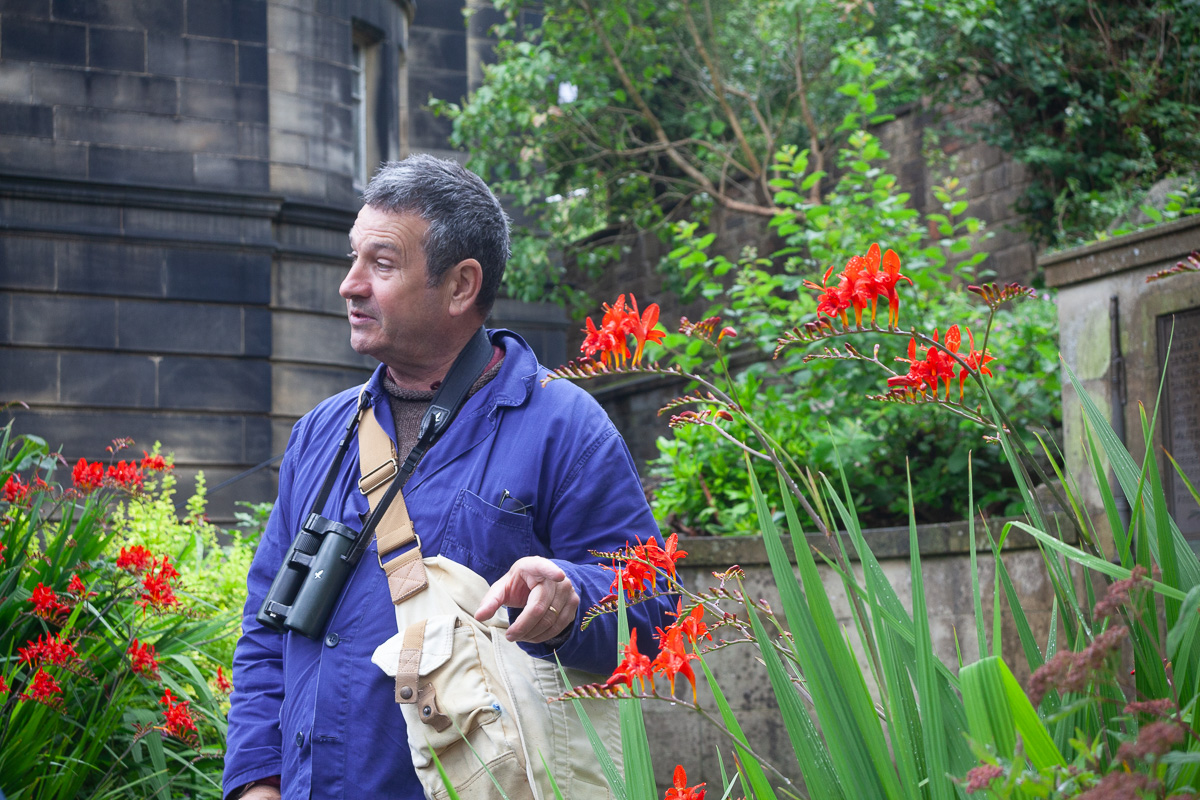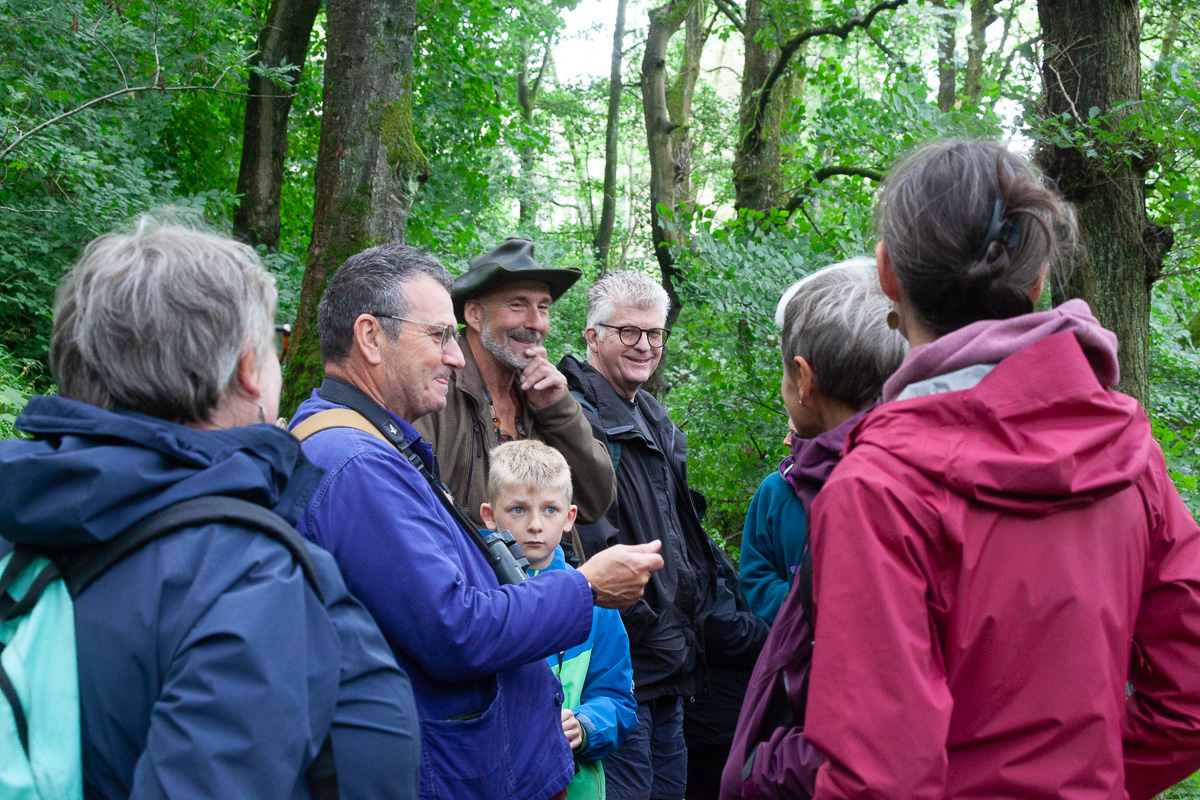On Sunday morning, several other Hebden Bridge locals and I took part in a short nature walk with naturalist and author Mark Cocker. When I say ‘short’, I mean short in distance: the walk must have been all of 400 metres in total, there and back, from the garden of the Birchcliffe Centre into the adjacent Nutclough Wood. But, as far I’m concerned, the walk’s shortness enhanced its appeal: there is so much to look at and ponder in the natural world, you don’t have to walk far to see wonders galore. (Indeed, I would make the case you don’t have to walk at all: why not simply sit on a convenient rock for a couple of hours and see what comes along? ‘Nature waiting’, I like to call it.)
Not only is Mark a highly knowledgable naturalist, but he also seems to possess the superpower of being able to remember people’s names. He kept everyone in the small group involved, asking them what they could see, and what interpretations they might put on it. He even kept drawing the local Darwin nerd into the conversation… I bluffed my way through as best I could!
We talked about the age of the earth, and of life on it; the ecological benefits of native over imported flora; flowering strategies; bees’ foraging tactics; waggle-dances; inter-species signalling; and seed dispersal—and that was before we had even entered the wood!

Once beneath the canopy, we talked about honeysuckle nectaries; moth pollination; dutch elm disease; greenflies and wasps; maple syrup; the calls of nuthatches and treecreepers; wrens’ nests; mycorrhizal fungi networks; mosses and liverworts; photosynthesis; the colonisation of the land; avian seed dispersal; and a host of other wonders. I even spotted a lesser-spotted Amy Liptrot stealing through the undergrowth, bushwhacked her, and got to introduce two of my favourite authors to one another.

I have to say, the walk came at just the right time for me: I’ve recently been thinking I need to include a larger proportion of natural history (in relation to history of science) in my Darwin book. The walk reminded me to concentrate, as Darwin did, on the small things that anyone might observe on their own local patch. You can keep the Serengeti and the Galápagos Islands; Darwin was never happier than when contemplating the grandeur of an entangled bank.

Leave a Reply